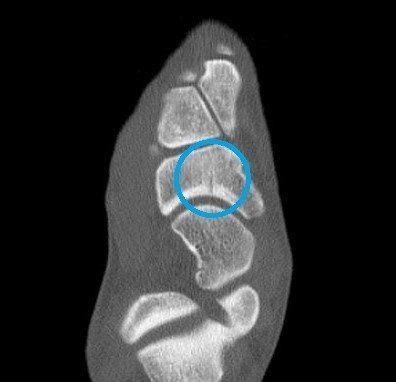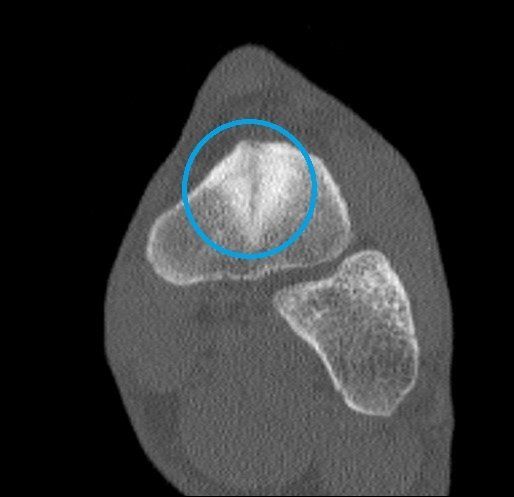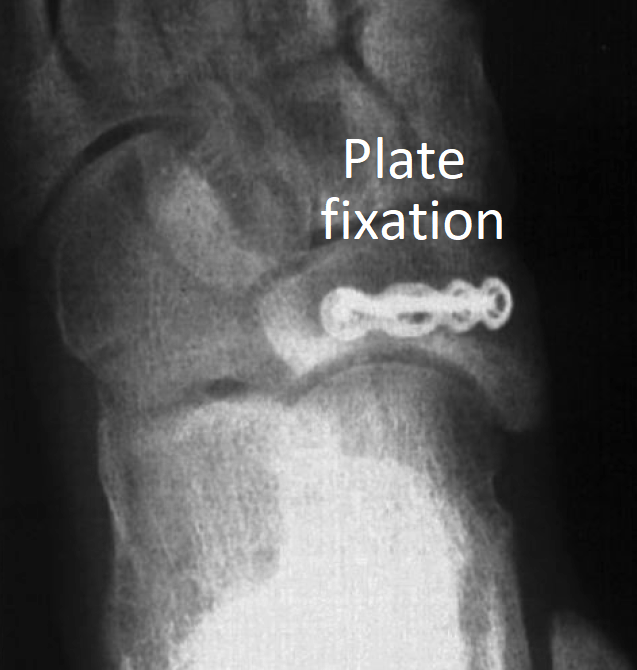Stress Fractures of the Foot
A stress fracture is a small crack in a normal bone which occurs after repeated overuse. They are common in the feet of active people.
The three important ankle and foot stress fractures are:
- medial malleolar stress fracture (see Ankle Spurs and Impingement )
- navicular stress fracture (see below)
- 5th metatarsal stress fracture (see 5th Metatarsal Fracture ).
Symptom of a stress fracture are:
- pain which worsens with activity and decreases with rest
- swelling.
Causes of a Stress Fracture
Stress fractures often result from a rapid increase in the intensity of exercise or sporting activity. They can also be caused by a change in the surface of play and wearing worn-out or uncomfortable footwear.
Some people have structural foot issues that make stress fractures more likely. The most important are:
- ankle and talo-navicular joint stiffness (spur impingement +/- ossicles)
- high arched (cavo-varus) feet
- bunions (hallux valgus).
Other people have weaker than normal bones (osteoporosis) which make fractures more likely. These are called insufficiency fractures instead.
Navicular Stress Fracture
- This uncommon but serious injury involves the navicular bone of the hindfoot (see Foot - Anatomy and Imaging ).
- It is seen in runners and jumping athletes.
- Pain occurs in the top of the foot just in front of the ankle (the "N-spot").
- A vertical split begins at the top of the bone ( see CT images ) and can spread through to its base (Saxena grades I, II and III).
- Healing can take many months and surgery is recommended if healing is not occurring or the fracture is > 30% through the bone ( see plate fixation image ).
Diagnosing a Stress Fracture
- evaluating symptoms and risk factors
- performs a thorough examination of the foot and ankle.
Treatment of Stress Fractures
- The duration of this treatment is unpredictable.
- X-rays and/or scans are required every 6 weeks until healing has occurred.
- Delayed healing and/or re-fracture can occur.
- If a stress fracture fails to heal, gets worse (see navicular stress fracture above) or recurs, surgery is usually recommended.
- Elite athletes and people with structural foot issues are often offered earlier surgery to make recovery more predictable.
- Surgery involves stabilising the fracture with a metal screw or plate +/- bone graft, then rest and immobilisation in a "moon-boot".
Prevention of Stress Fractures
- start any new sporting activity slowly and progress gradually
- cross-training or altering exercises
- maintain a healthy diet and include calcium and vitamin D rich foods in the diet
- wear well-fitting and comfortable footwear specifically designed for the sporting activity
- avoiding old or worn out shoes.
















